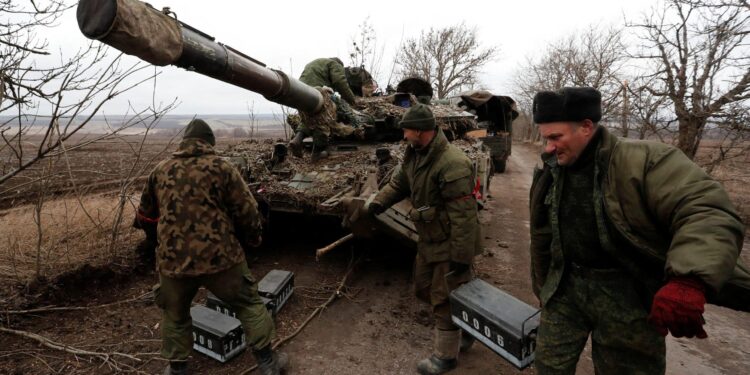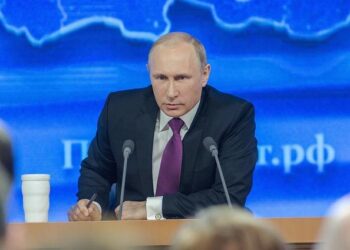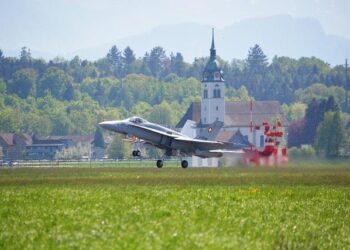Tensions in Eastern Europe escalated once again as Lithuania has formally accused Russia of violating NATO airspace, marking the latest development in the ongoing Ukraine conflict. According to Lithuanian officials, Russian military aircraft breached alliance airspace, prompting swift diplomatic protest and raising concerns about regional security amid the protracted war in Ukraine. This incident underscores the persistent volatility along NATO’s eastern borders and highlights the broader geopolitical ramifications of Russia’s aggressive posture.
Lithuania Raises Alarm Over Russia’s Increased NATO Airspace Intrusions
Vilnius officials have voiced strong concerns after a marked increase in Russian military aircraft breaches over NATO-controlled airspace in recent weeks. The Lithuanian Ministry of Defence confirmed multiple instances where Russian jets approached and penetrated the country’s air defense identification zone (ADIZ), raising alarms over escalating tensions in the Baltic region. The incursions have prompted immediate consultations among NATO allies, emphasizing the need for enhanced vigilance and coordinated response mechanisms to ensure regional security.
- Frequency of airspace intrusions has doubled compared to the previous quarter
- Incidents primarily occurred near Lithuania’s western borders
- NATO scrambled fighter jets to intercept Russian aircraft on several occasions
- Lithuania demands increased surveillance and NATO presence in the Baltic skies
| Incident Date | Number of Russian Aircraft | Location | Response |
|---|---|---|---|
| May 12, 2024 | 3 | Near KlaipÄ—da | NATO jets scrambled |
| June 3, 2024 | 2 | Close to Ĺ iauliai | Warning communicated |
| June 15, 2024 | 4 | Western border region | Enhanced radar monitoring |
Experts warn that these provocations align with broader Russian strategic efforts aimed at testing NATO’s readiness and resolve amid the ongoing conflict in Ukraine. Lithuanian officials stressed that such intrusions not only violate international norms but also heighten risks of unintended military confrontations. NATO Secretary-General has reaffirmed the alliance’s commitment to collective defense, assuring member states that all necessary measures will be undertaken to preserve the stability and security of its airspace in the face of growing pressure from Moscow.
Implications for Regional Security and NATO’s Strategic Response
The recent allegations by Lithuania concerning Russia’s intrusion into NATO airspace have escalated tensions across Eastern Europe, raising critical questions about the alliance’s preparedness and response mechanisms. This breach underscores the fragile nature of regional security, particularly in countries bordering Russia and Belarus, which remain on high alert amid ongoing hostilities in Ukraine. NATO faces the complex task of balancing deterrence with diplomacy, ensuring member states perceive the alliance as both responsive and resilient without provoking further escalation.
In response, NATO has outlined several strategic imperatives to bolster its defensive posture:
- Enhanced Air Policing: Increasing the frequency and range of surveillance flights over vulnerable regions.
- Rapid Deployment Units: Positioning multinational battlegroups closer to the eastern flank for swift reaction.
- Strategic Communications: Coordinating messaging to deter aggression while reassuring member states and partners.
| NATO Strategic Action | Potential Impact |
|---|---|
| Airspace Surveillance Boost | Improved early warning capabilities |
| Increased Eastern Flank Exercises | Demonstrates operational readiness |
| Diplomatic Engagement Intensification | Reduces risk of miscalculation |
Recommendations for Strengthening Air Defense and Enhancing Alliance Coordination
To effectively counter increasing airspace violations, it is essential that NATO members invest in modernizing and expanding their integrated air defense systems. This includes deploying advanced radar technologies, enhancing real-time data sharing mechanisms, and ensuring rapid response capabilities through joint command centers. Strengthening cyber defenses to protect critical air defense infrastructure from potential sabotage or electronic warfare also remains a top priority. Above all, interoperability between member states’ military assets must be seamlessly maintained to maximize operational efficiency and reduce the risk of miscommunication during critical interceptions.
Enhancing alliance coordination demands transparent communication channels and regular joint exercises aimed at simulating possible airspace incursions. Establishing a unified protocol for threat assessment and response timing can improve decision-making and reduce delays. Below is a summary of key recommendations to bolster defense and strategic coordination:
- Upgrade early-warning radar and sensor networks along NATO’s eastern flank
- Expand and harmonize communication systems for seamless cross-border coordination
- Conduct frequent multinational air defense drills to enhance readiness and trust
- Implement robust cyber resilience programs to protect air defense assets
- Develop standardized rules of engagement for airspace violation incidents
| Action | Expected Impact | Timeline |
|---|---|---|
| Deploy next-gen radar stations | Improved detection range & accuracy | 12-18 months |
| Implement joint command centers | Faster decision-making | 6-12 months |
| Launch cyber defense task forces | Enhanced infrastructure protection | Ongoing |
Wrapping Up
As tensions continue to escalate in the region, Lithuania’s latest accusation of Russian violations of NATO airspace underscores the fragile security dynamics in Eastern Europe. The incident highlights ongoing challenges for NATO’s deterrence strategy amid the protracted conflict in Ukraine. International observers remain watchful as diplomatic efforts strive to prevent further escalation, with the situation poised to influence the broader geopolitical landscape in the coming weeks.
















